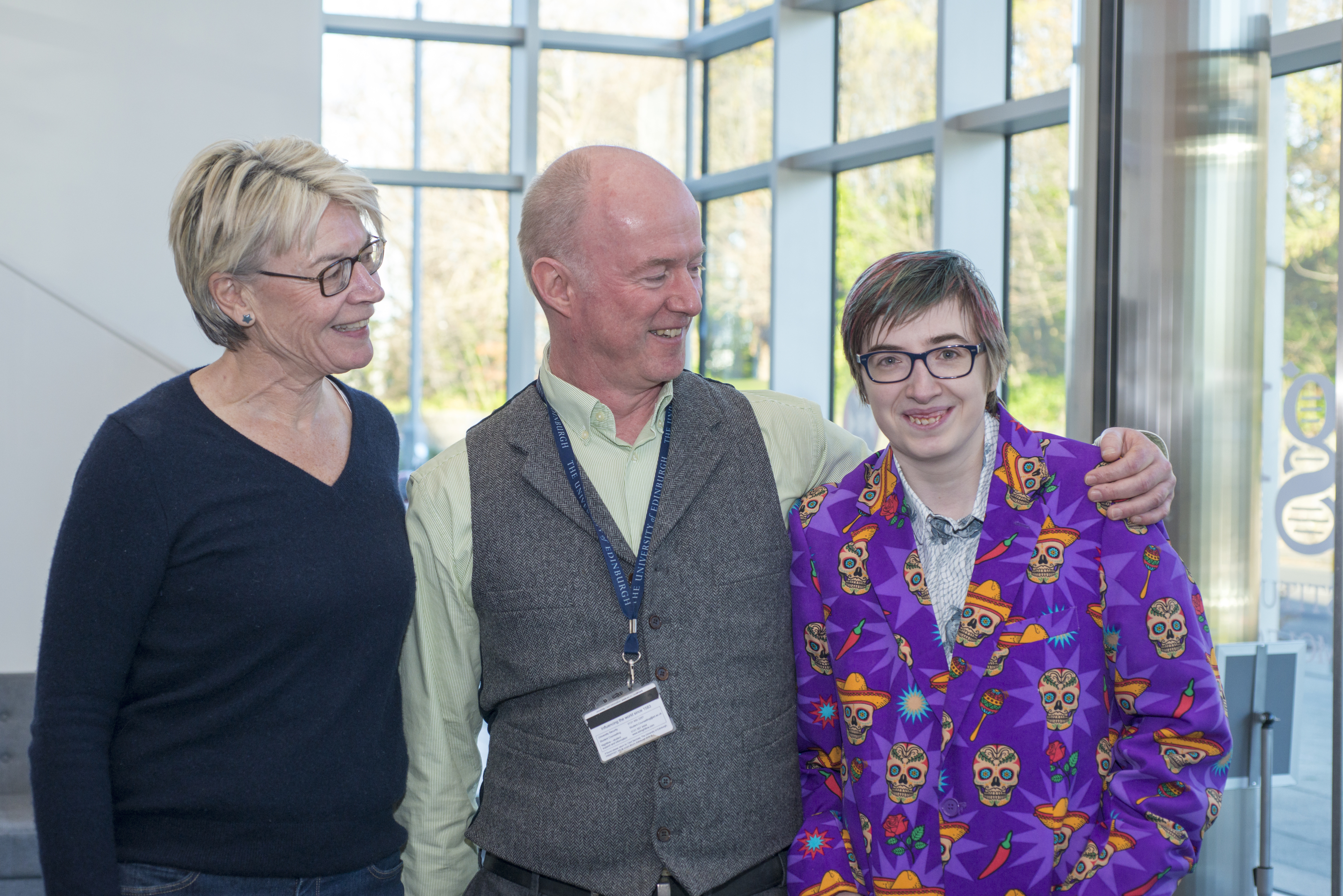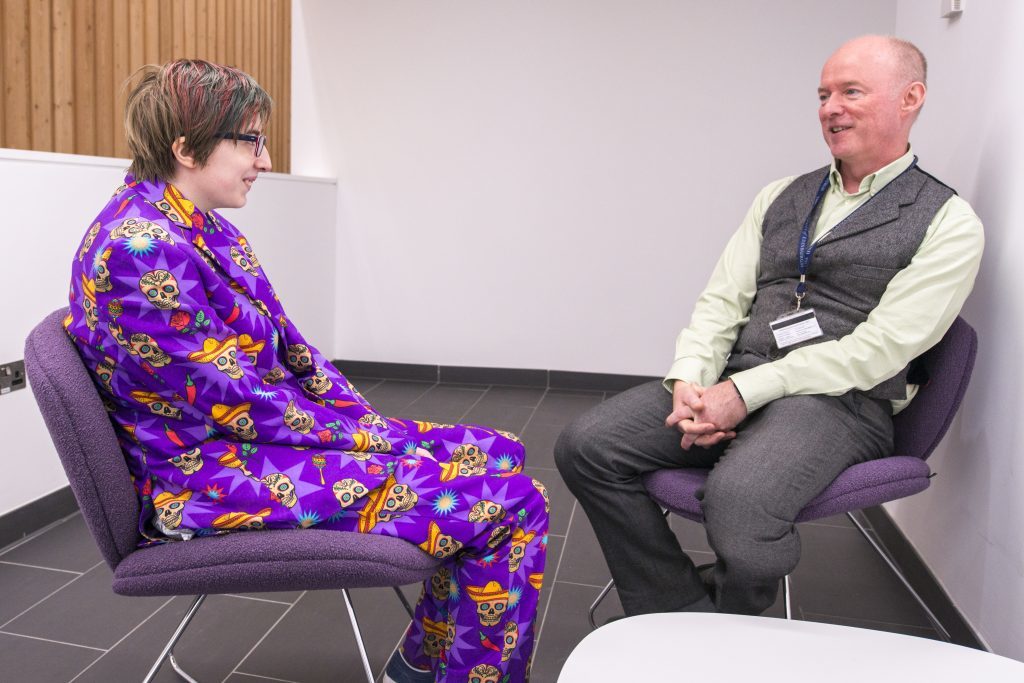
THE mother of a young woman with a disability so unique it is named after her has spoken of the family’s amazing bond with the doctor who diagnosed her.
Professor David FitzPatrick of The Human Genetics Unit in Edinburgh first met Annie Dow when she was 13 after she was referred to him for tests.
Even though he couldn’t find out what was wrong with her at the time, David promised he would get back in touch if and when new technology became available.
And, true to his word, four years later a letter duly popped through the door from modest David to say he’d had a breakthrough using a new microscope.
In the letter, he revealed he had discovered that Annie, now 26, was missing 25 genes out of 22,000, leaving her with learning difficulties.
Caring geneticist David was the first person that Annie let take blood from her and the family still keep in touch with him.
Mum Sophie said: “David has a very gentle manner and so instilled in Annie an important trust in him.
“She was extremely anxious about needles and this was the first person that Annie would allow to do it.
“David said: ‘Look, I want to keep Annie’s blood sample.’
“He knew something was up with Annie but he didn’t have the technology yet to find out what. Four years later we got a letter from David.
“He said: ‘I have a stronger microscope and I have tested Annie’s blood’.”
David’s tests revealed that Annie had a chromosome deletion on Chromosome 1.
She is the only person in the world so far with this particular chromosome profile, and as a result the discovery was named “Annie’s syndrome”.
Sophie knew there was something wrong with Annie when she was just weeks old.
“When she was born there was something wrong. I felt instinctively her body was in this world but her soul was not there until about two weeks later.”
In her early years, Annie did not speak in full sentences and could not read.
Sophie said: “She was a very slow developer. I always gave her the benefit of the doubt, until a very up-front friend said, ‘You need to do something’.”
When Annie was three years and four months old, Sophie consulted a child psychologist, who after thorough assessments and tests told Sophie her daughter was mentally handicapped.
A year later the family moved to Edinburgh and eventually consulted doctors at the city’s Sick Kids hospital for a more precise diagnosis. Sophie said: “It took two years to get a diagnosis – that’s unacceptable. These years are now lost for ever.”
In the end their diagnosis, which was “brain damage that occurred during pregnancy”, was also inconclusive.
It was only when Sophie got in touch with Christopher Gillberg, a Swedish professor of child and adolescent psychiatry, that she looked into the possibility that Annie’s issues were chromosomal.
She said: “I asked him if he could take a look at Annie because there didn’t seem to be a diagnosis that fitted in with her difficulties.
“He couldn’t come up with a definite diagnosis, but he thought it was something chromosomal. I had never thought about it before.”
It was Professor Gillberg who put Sophie in touch with David.
Sophie said: “Annie knows she has learning difficulties and she knows she needs support.
“She’s extremely good at knowing her limitations as well as her strengths. Her imagination is unlimited and her self-esteem is very high in a beautiful way.
“She’s completely at ease with herself and she knows when to ask for help.”
Sophie founded charity Mindroom to support children with learning difficulties, as well as their parents.
David now refers many of his patients on to Mindroom for support and guidance.

He said: “Someone like Sophie is very inspirational and to know all the hard work will pay off and when they’re older they will be able to have a fulfilling life, that’s a particular help for parents.
“I think they really have been great ambassadors for genetic diseases and they show how you can get on with your life.
“She’s an incredibly good communicator and having someone like that helps people realise that it can be done.
“It’s good to have exceptional people around as they can inspire other people.”
Annie now lives with her friend Lucy in Edinburgh. Sophie said: “It’s working beautifully and is a real success story.
“They are both supported by carers who help them to lead a more independent life.”
For more info see www.mindroom.org

Enjoy the convenience of having The Sunday Post delivered as a digital ePaper straight to your smartphone, tablet or computer.
Subscribe for only £5.49 a month and enjoy all the benefits of the printed paper as a digital replica.
Subscribe